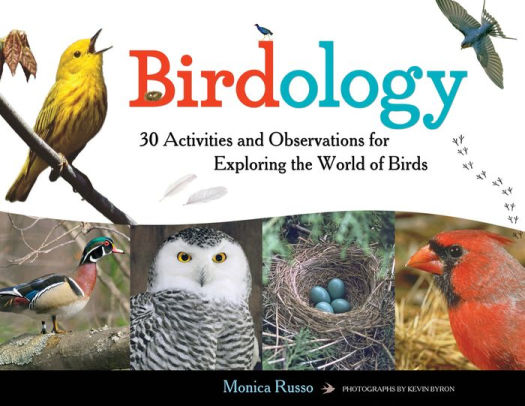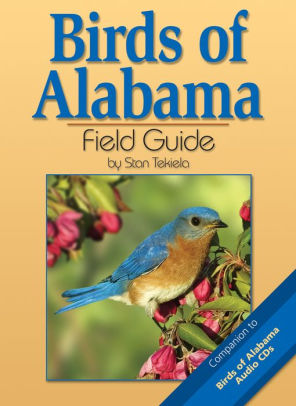OC Field Investigation Activity: Birds & Their Adaptations
In this activity, students will observe the external structures of birds and learn how these adaptations help with their survival, growth, behavior and reproduction. Then the students will observe, identify and research a bird found in the outdoor classroom to provide evidence for its adaptations.
STEP 1: Engage through Discussion
The background information, interactive powerpoint, and example questions below can be used to help introduce the topic, engage the students, and build a foundation to discuss the topic:
STEP 2: Explore with Literature
This book can be used to further explore the topic with your students:
STEP 3: Explain using Technology
These videos can be used to further explain the topic to your students:
STEP 4: Investigate through Journaling
The Outdoor Classroom Field Investigation Activity Observation Sheet(s) allow students to apply what they have learned as they investigate and record their real-world observations in their field journals. Before you go outside, don't forget to review the activity instructions and your Outdoor Classroom Rules with your students:
STEP 5: Review with an Assessment
Review and assess the students’ observations and answers on the activity sheets. You can also use the following activity to review and assess your students’ level of understanding:
- Lesson Plan: Interactive STEPS below or PDF
- Outdoor Classroom Field Investigation Activity Sheets for Students:
- Outdoor Classroom Field Investigation Answer Sheets for Teachers: (version 2) Word Doc can be edited | PDF ready "as is"
- Materials Needed: Copies of the Activity Pages, Clipboards, Pencils, and Field Identification Guides such as Birds of Alabama by Stan Tekiela, the National Audubon Society Guide to the Southeastern States, or Cornell University’s AllAboutBirds.org website (Optional: magnifying glasses)
- Duration: Introduction - 40 min. | Outdoor Exploration - 30 min. | Indoor Research & Review - 40 min.
- Alabama Course of Study Standards Taught: PDF
STEP 1: Engage through Discussion
The background information, interactive powerpoint, and example questions below can be used to help introduce the topic, engage the students, and build a foundation to discuss the topic:
- Background Info: Word Doc | PDF
- Interactive PowerPoint: PPT - Be sure to click "Enable Editing" when you open it, and click "Slide Show" & "From Beginning" to use interactive capability.
- Example Questions & Answers: Word Doc | PDF
STEP 2: Explore with Literature
This book can be used to further explore the topic with your students:
- Feathers: Not Just For Flying by Melissa Stewart ISBN: 978-1-58089-431-9
- Birdology by Monica Russos ISBN: 978-1-61374-949-4

STEP 3: Explain using Technology
These videos can be used to further explain the topic to your students:
- Birds: Educational Video for Kids by Happy Learning (4:26 min.) @ https://www.youtube.com/watch?v=8vL_2rF8JHU
- Bird Evolution and Adaptations by Discovery Channel (3:15 min.) @ https://www.youtube.com/watch?v=A5kzxOtvCjc
STEP 4: Investigate through Journaling
The Outdoor Classroom Field Investigation Activity Observation Sheet(s) allow students to apply what they have learned as they investigate and record their real-world observations in their field journals. Before you go outside, don't forget to review the activity instructions and your Outdoor Classroom Rules with your students:
- Outdoor Classroom Activity Tip - Regardless of whether you have a wooded outdoor classroom or have one limited to a courtyard, varieties of bird species are viewable in your school’s outdoor classroom. Through the establishment of a bird sanctuary or feeding area, you can also increase the variety and number of bird species. Looking for adaptations in other fauna and flora is an extension of this activity that you can do with your students. Don’t forget your binoculars if you have some!
- Activity Instructions for the Activity Sheet(s) - Take a birding hike in your outdoor classroom. When you spot a bird, watch it carefully and record your observations below. Identify the adaptations that it has to help it survive and provide evidence (facts that prove the truth) to explain the adaptations. Then use a field identification guide (see below) along with your observation notes to identify the bird and learn about it.
 Activity Sheet Version #1: (general bird) Word Doc can be edited | PDF ready "as is"
Activity Sheet Version #1: (general bird) Word Doc can be edited | PDF ready "as is" - Activity Sheet Version #2: (Hummingbird) Word Doc can be edited | PDF ready "as is"
- Bird ID Books: Birds of Alabama and National Audubon Society Field Guide to Southeastern States
- Bird ID Websites: The Cornell Lab of Ornithology’s AllAboutBirds.org
- Birding Apps: Merlin Bird ID by Cornell Lab (Free) Peterson Backyard Birds of North America (Free)
- Activity Answer Sheets for Teachers - (version 2) Word Doc can be edited | PDF ready "as is"
- Example Outdoor Classroom Rules - (PDF) The outdoor classroom is not a playground, so do not run and do not climb on anything. Remember that the outdoor classroom provides habitat (a home) for local wildlife, and you should not damage the local wildlife habitat. Therefore, do not pick up wildlife, plants, flowers or rocks. Also, do not feed wildlife.
STEP 5: Review with an Assessment
Review and assess the students’ observations and answers on the activity sheets. You can also use the following activity to review and assess your students’ level of understanding:
- Adapt-a-Bird (PDF) - Students create a new bird species using the various adaptations that bird have.
 Wildlife Tag
Wildlife Tag